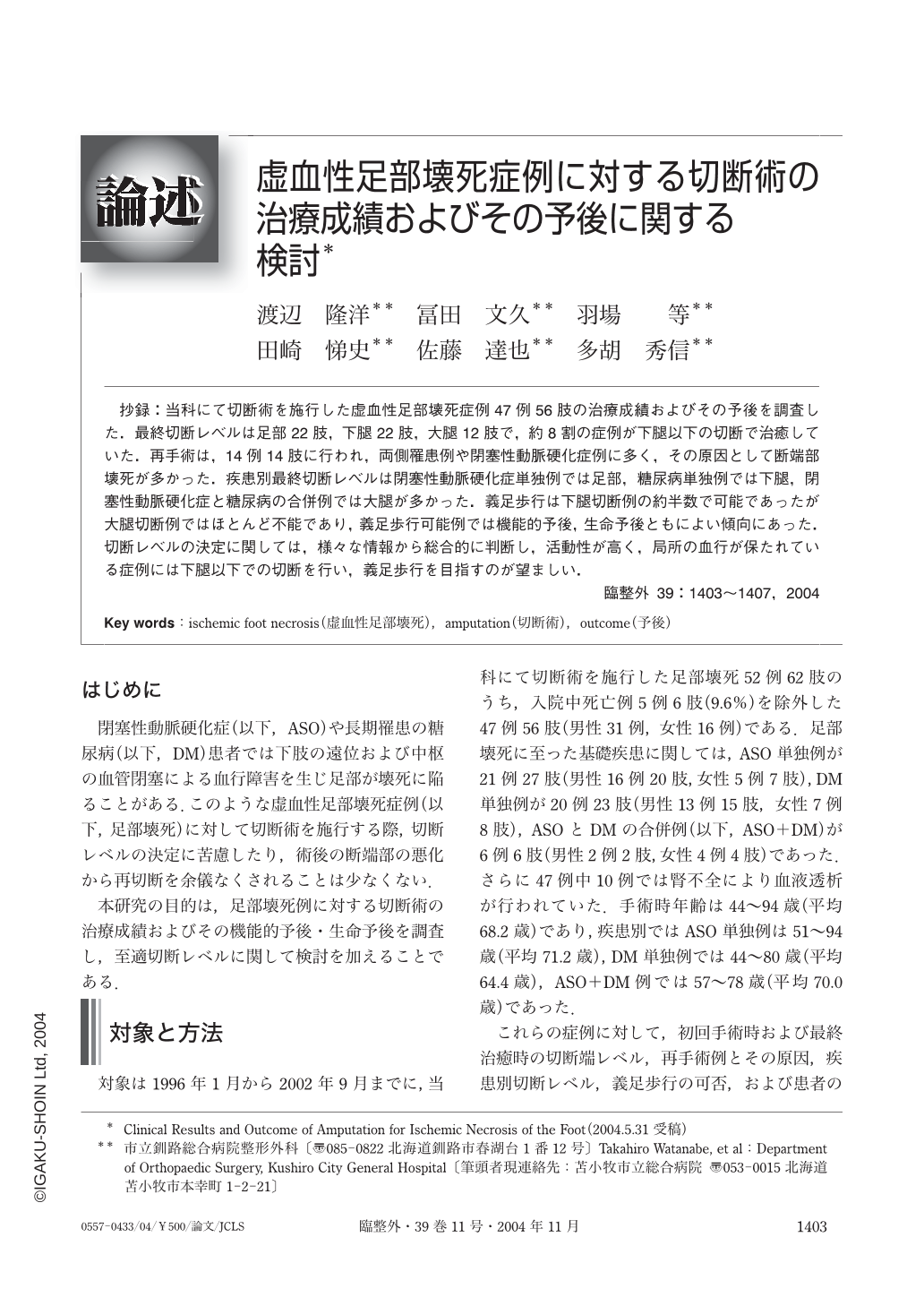Japanese
English
- 有料閲覧
- Abstract 文献概要
- 1ページ目 Look Inside
抄録:当科にて切断術を施行した虚血性足部壊死症例47例56肢の治療成績およびその予後を調査した.最終切断レベルは足部22肢,下腿22肢,大腿12肢で,約8割の症例が下腿以下の切断で治癒していた.再手術は,14例14肢に行われ,両側罹患例や閉塞性動脈硬化症例に多く,その原因として断端部壊死が多かった.疾患別最終切断レベルは閉塞性動脈硬化症単独例では足部,糖尿病単独例では下腿,閉塞性動脈硬化症と糖尿病の合併例では大腿が多かった.義足歩行は下腿切断例の約半数で可能であったが大腿切断例ではほとんど不能であり,義足歩行可能例では機能的予後,生命予後ともによい傾向にあった.切断レベルの決定に関しては,様々な情報から総合的に判断し,活動性が高く,局所の血行が保たれている症例には下腿以下での切断を行い,義足歩行を目指すのが望ましい.
We assessed the clinical results and outcome of patients who had undergone amputation for ischemic necrosis of the foot. Between January 1996 and September 2002, 56 extremities of 47 patients with necrosis of the foot underwent amputation in our department. In 22 of the feet the final amputation level was at the foot, in 22 it was below the knee, and in the remaining 12 it was above the knee. In about 80%of the amputees healing occurred at the below-knee or more distal level. In 25%of all extremities, re-amputation or secondary stump plasty was performed. The most common final amputation level was at the foot in patients with arteriosclerosis obliterans (ASO) alone, below the knee in patients with diabetes mellitus (DM) alone, and above the knee in patients with both ASO and DM. Half of the patients who had undergone below-knee amputation were able to walk with a prosthesis, but only one patient who had undergone above-knee amputation was able to walk. Below-knee or more distal amputation should be performed in patients with a high activity level and acceptable blood perfusion at the amputation site to maintain their ability to walk with a prosthesis.

Copyright © 2004, Igaku-Shoin Ltd. All rights reserved.


